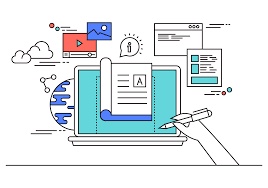How to Use AI Technology to Improve Risk Adjustment Coding Efficiency
Are you a healthcare provider looking to improve your HCC Risk Adjustment Coding efficiency? AI technology offers a unique solution that can speed up the process and make it more accurate. In this blog post, we will explore how AI technology can be used to improve HCC Risk Adjustment Coding and auditing accuracy, giving healthcare providers the tools they need to succeed. We’ll discuss the different ways AI technology can be used and the advantages it offers to providers. By the end of the post, you’ll have a better understanding of how to use AI technology to improve your risk adjustment coding and auditing processes.
How Does AI Help with Risk Adjustment?
AI can be used to improve the accuracy and efficiency of risk adjustment coding and auditing. AI-driven analytics can help uncover potentially overlooked data points and coding opportunities, ensuring that claims are coded accurately and thoroughly. AI can also provide real-time feedback on coding decisions and recommendations, allowing for quick and efficient adjustments when necessary.
AI can also be used to analyze past claims data in order to predict which codes should be used for new claims. This predictive coding capability helps to reduce the time spent researching codes and ensures accurate coding decisions. In addition, AI can detect potential fraud or errors in the coding process, helping to identify any issues before they become serious problems.
Overall, the use of AI technology in risk adjustment can help reduce coding time and errors while improving accuracy. By leveraging AI-driven analytics, organizations can maximize the value of their risk adjustment processes and ensure the most accurate claims are filed.
What are the Benefits of Using AI for Risk Adjustment?
Using AI for risk adjustment coding and auditing can offer numerous benefits for medical facilities and healthcare providers. By leveraging the speed and accuracy of AI technology, medical professionals can improve their risk adjustment coding and auditing efficiency.
One of the primary benefits of using AI for risk adjustment is the ability to quickly identify errors and inaccuracies in coding. AI algorithms can sift through large amounts of data quickly and accurately, allowing medical professionals to spot potential coding errors before they become a problem. AI technology can also detect fraudulent activity that may not be visible to the human eye.
Another benefit of using AI for risk adjustment is the ability to analyze patient information more accurately. AI algorithms can uncover patterns in patient data that would otherwise remain hidden. This helps medical professionals better understand the underlying causes of patient illnesses and allows them to provide more targeted treatments.
Finally, using AI for risk adjustment helps reduce costs associated with billing errors and fraud. By catching errors early, medical professionals can save money on costly insurance denials and billing disputes. In addition, AI technology can help medical professionals reduce labor costs by automating many of the manual processes associated with risk adjustment.
Overall, using AI for risk adjustment offers a number of benefits for medical facilities and healthcare providers. With the help of AI technology, medical professionals can improve their risk adjustment coding and auditing efficiency while also reducing costs associated with billing errors and fraud.
How to Get Started with AI for Risk Adjustment
Getting started with AI for risk adjustment coding and auditing can be a daunting task. However, it doesn’t have to be complicated if you understand the basics and have the right tools in place.
First, you need to identify which risk adjustment needs you are trying to address. This could include coding accuracy, medical record review, predictive analytics, or any other related tasks. Once you’ve identified the specific tasks that need to be addressed, you’ll need to find the right AI technology to help.
When searching for the best AI technology for risk adjustment, look for solutions that are tailored to your specific needs and make sure they integrate seamlessly with your existing systems. It’s also important to consider the cost of implementing the technology and whether it will bring long-term value to your organization.
Once you have selected the right AI technology, you can start to set it up and configure it for your specific needs. Depending on the type of technology, this may require data integration and customization. The key is to ensure the software is tailored to your needs and provides the most accurate results possible.
Finally, once your AI technology is in place, you can start using it to streamline risk adjustment coding and auditing processes. With the speed and accuracy of AI technology, you can save time and reduce errors while gaining insights from more detailed analysis.


No comments yet